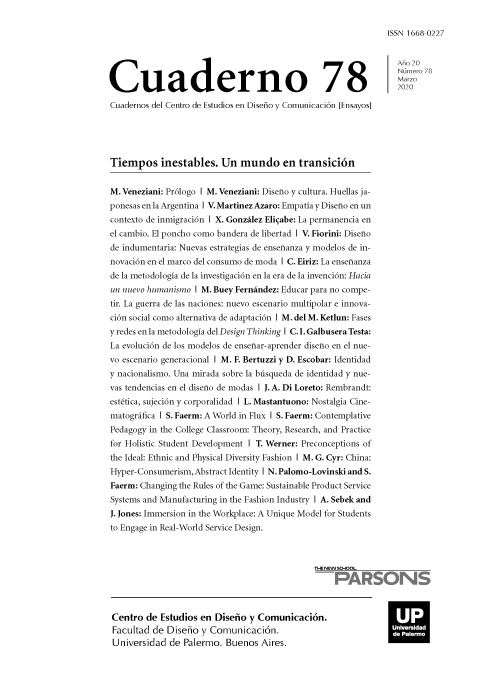Fases y redes en la metodología del Design Thinking
Abstract
In a world of forms and within the field of design there is a universe that surrounds us, that constantly rotates, a kind of constellation map created by diverse points that seem to be all central. Thinking from geometric figures, we notice that they have meaning in themselves, and we find in them people, objects and ideas, a triangle that revolves motivated by the desire to create meanings. The discipline of design is currently trying to be a step forward in terms of innovation, and we are faced with the question: how do we innovate if we are told that everything is invented? The answer may be: the invented can reinvent itself. To verify this, different forms and visual areas are crossed, crossing these constellations with different techniques to motivate us to create from Design Thinking, using what we perceive and know, managing to represent concepts and establishing a correspondence between the components of the problem according to structural characteristics, superficial, objectives of the reasoner and demands of the environment, with “people” as a key factor in the methodology of Design Thinking, to get out of the idea of oneself and generate empathy with people.
References
Design Thinking Case Study: Innovation at Apple. (2016). Disponible en: http://www.designorate.com/design-thinking-case-study-innovation-at-apple/
Dondis, D. A. (1995). La sintaxis de la imagen. Introducción al alfabeto visual. Barcelona: Gustavo Gili.
Dubois, P. (2000). Video, cine, Godard. Buenos Aires. Libros del Rojas. Selección: Video y teoría de las imágenes.
Guerin, M. A. (2004). El relato cinematográfico. Sin relato no hay cine. Barcelona: Paidós Ibérica.
Harvard Business Review: Design Thinking. (2008). Disponible en: http://5a5f89b8e10a225a44acccbed124c38c4f7a3066210c073e7d55.r9.cf1.rackcdn.com/files/pdfs/IDEO_HBR_DT_08.pdf
James, H. (1978) L’Art de la fiction. Éditions Klincksieck. Trad. Cast.: El arte de la ficción. (1992) Universidad de León. ¿Qué es el design thinking? (2016). Disponible en: http://www.bienpensado.com/que-esel-design-thinking/
Zátonyi, M. (1992). Una estética del arte y el diseño de imagen y sonido (2da ed.). Buenos Aires: CP67.
Los autores/as que publiquen en esta revista ceden los derechos de autor y de publicación a "Cuadernos del Centro de Estudios de Diseño y Comunicación", Aceptando el registro de su trabajo bajo una licencia de atribución de Creative Commons, que permite a terceros utilizar lo publicado siempre que de el crédito pertinente a los autores y a esta revista.


